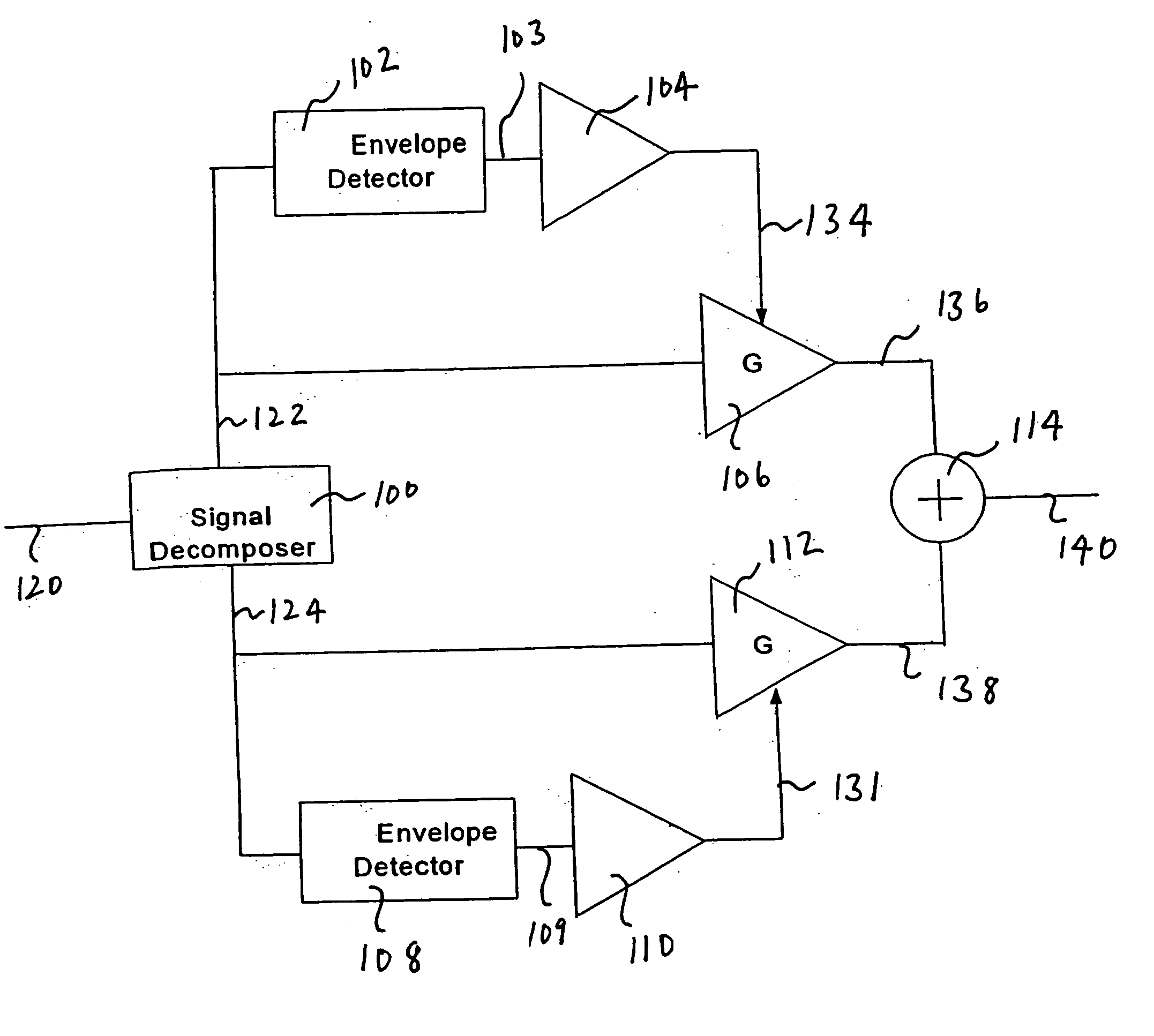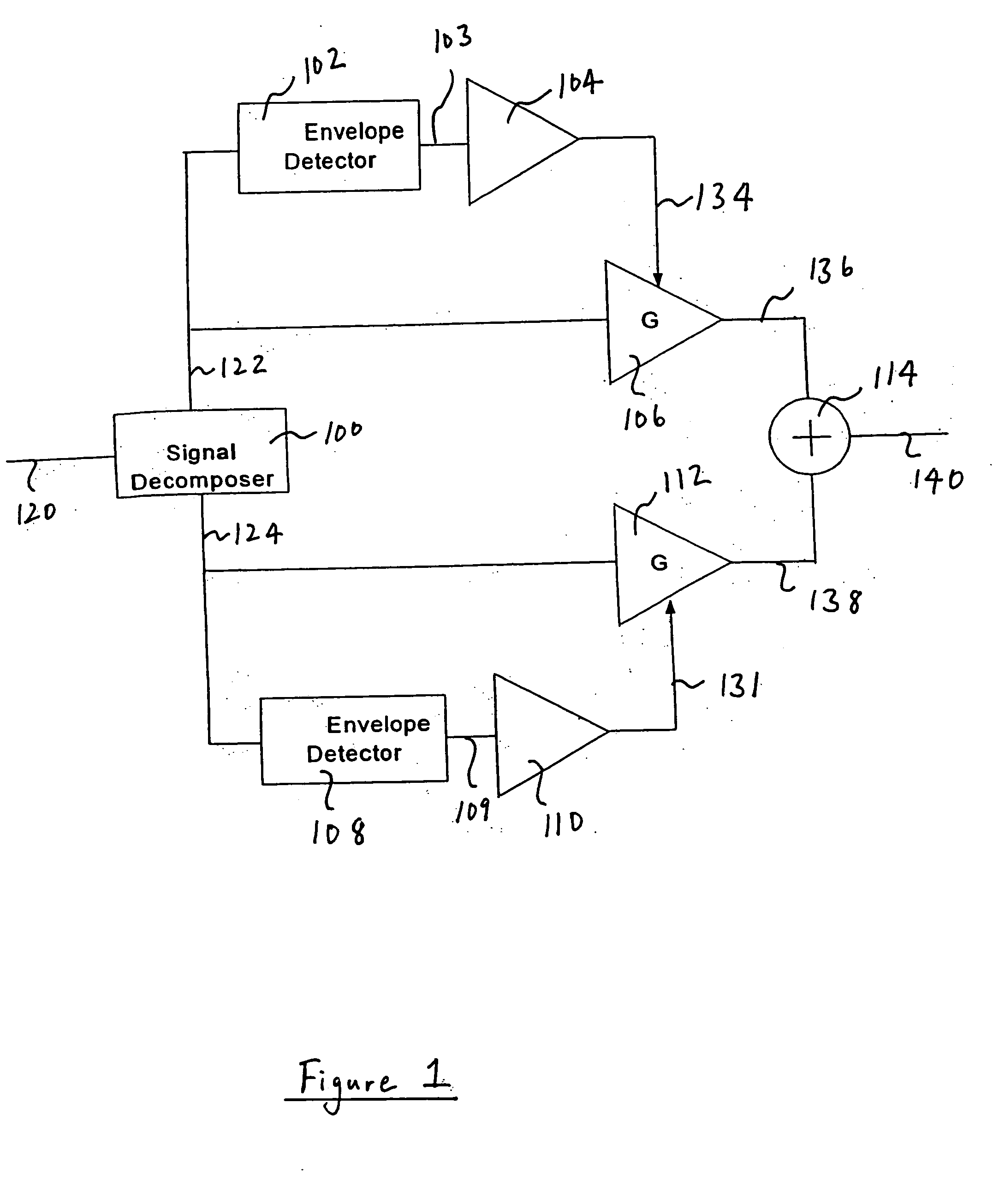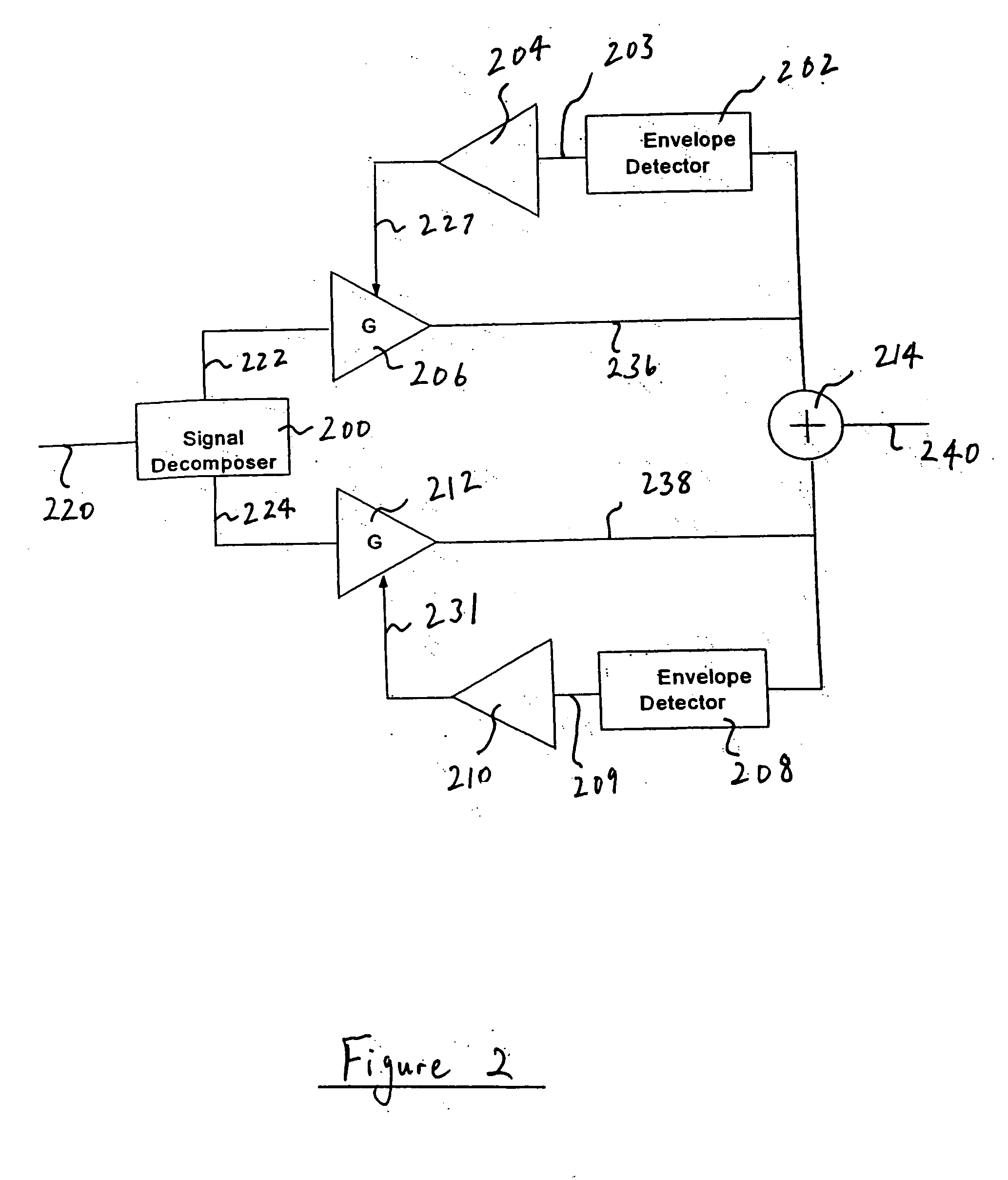Methods and systems for signal amplification through envelope removal and restoration
- Summary
- Abstract
- Description
- Claims
- Application Information
AI Technical Summary
Benefits of technology
Problems solved by technology
Method used
Image
Examples
Embodiment Construction
[0017] In brief overview embodiments of the present invention amplify an incoming signal by first decomposing the signal into a plurality of near-constant envelope signals. Ideally, this decomposition should produce a plurality of constant envelope signals, but due to band limiting and quantization effects in the decomposition process, the output signals retain a residual amplitude modulation and are hence described as near-constant envelope signals. Embodiments of the present invention also produce a plurality of control signals, each corresponding to the magnitude of a respective near-constant envelope signal. The plurality of control signals are used to amplify each near-constant envelope signal in inverse proportion to its corresponding control signal. This inverse amplification eliminates the unwanted residual amplitude modulation thus producing an amplified constant envelope signal. The plurality of amplified constant envelope signals can then be combined to form an amplified ...
PUM
 Login to View More
Login to View More Abstract
Description
Claims
Application Information
 Login to View More
Login to View More - R&D
- Intellectual Property
- Life Sciences
- Materials
- Tech Scout
- Unparalleled Data Quality
- Higher Quality Content
- 60% Fewer Hallucinations
Browse by: Latest US Patents, China's latest patents, Technical Efficacy Thesaurus, Application Domain, Technology Topic, Popular Technical Reports.
© 2025 PatSnap. All rights reserved.Legal|Privacy policy|Modern Slavery Act Transparency Statement|Sitemap|About US| Contact US: help@patsnap.com



